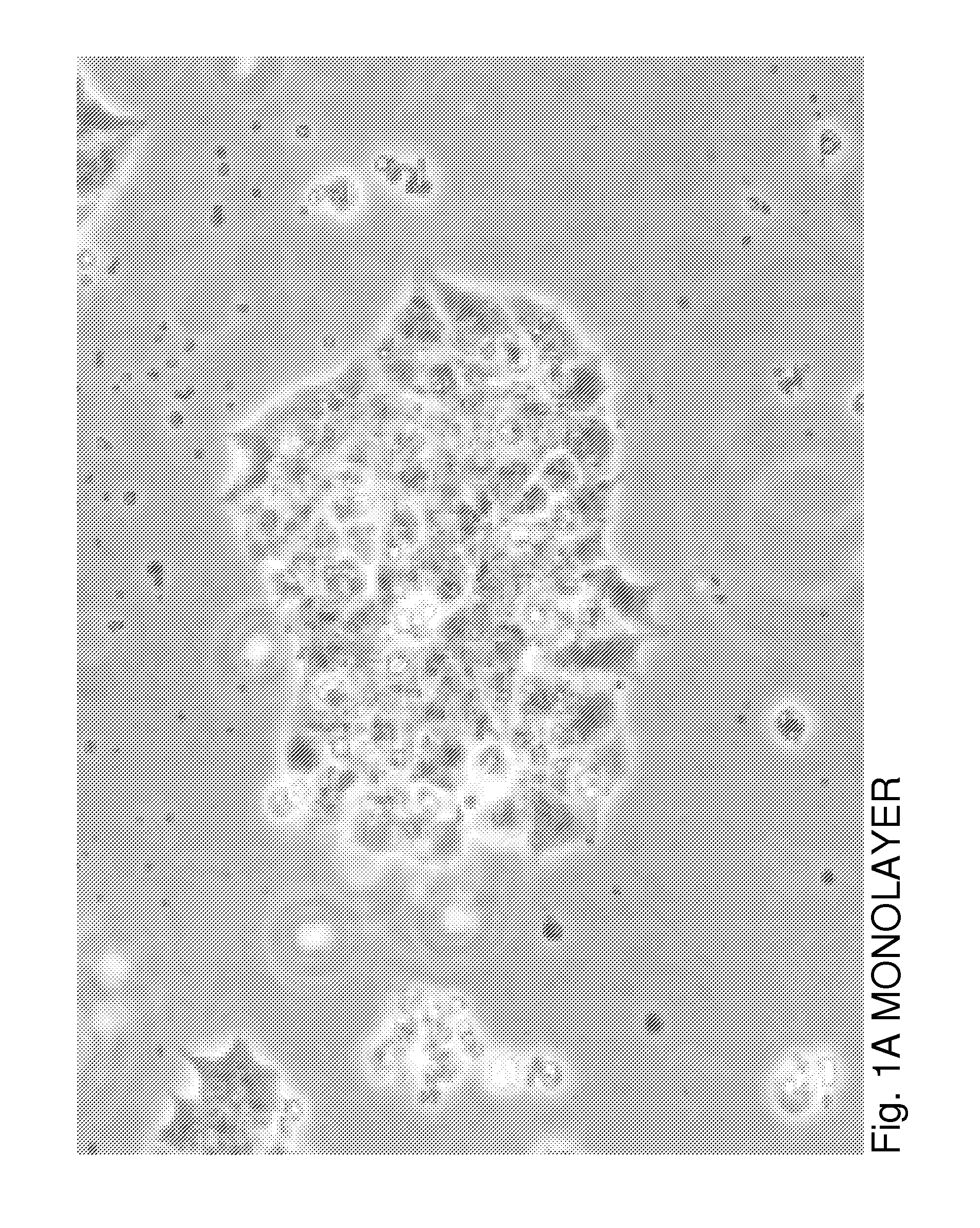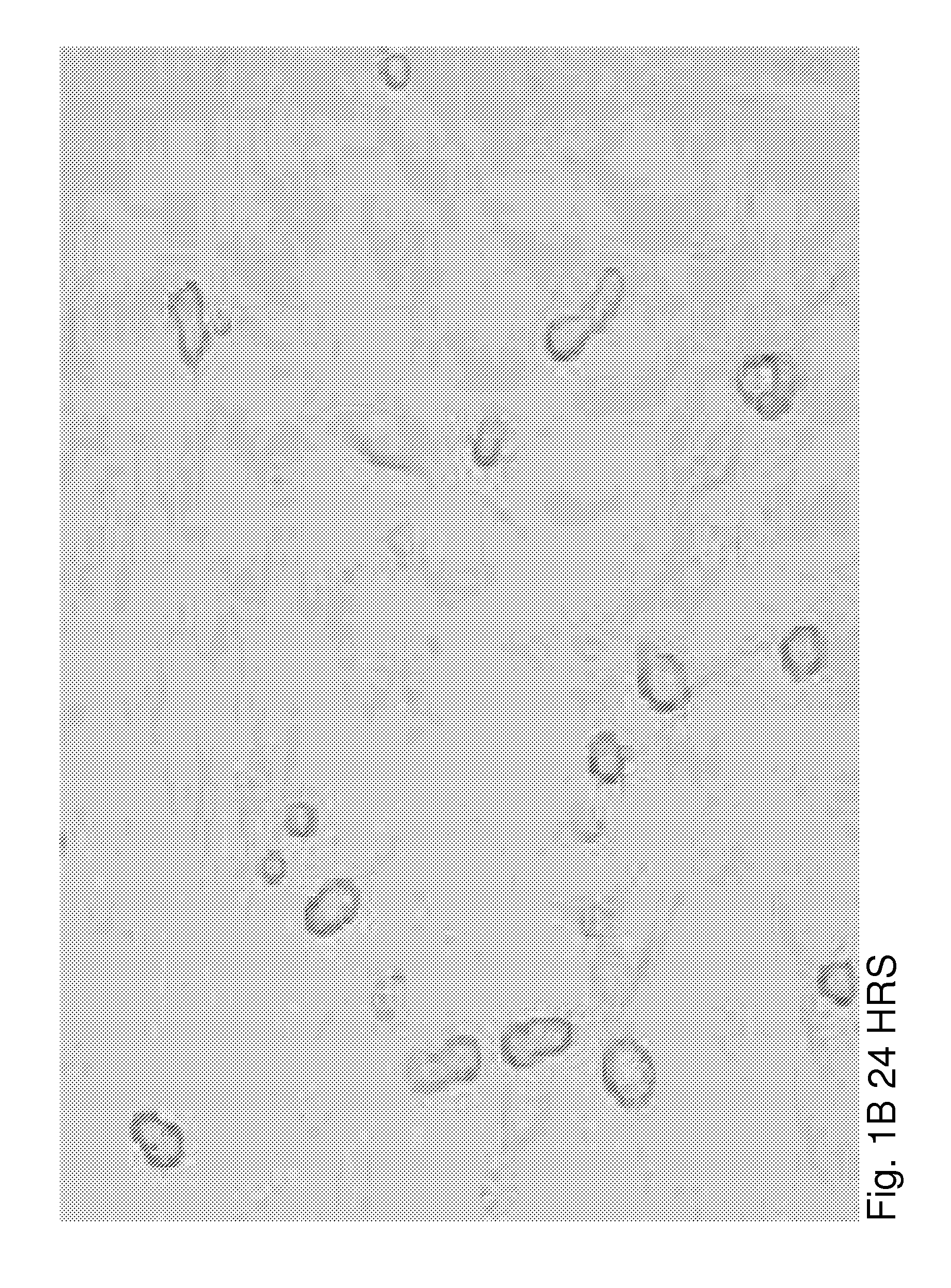Method for inducing the formation of islet structures and improving beta cell function
a beta islet and cell culture technology, applied in the field of mammals, can solve the problems of reducing insulin production, reducing the phenotype of the islet, requiring extensive cell manipulation, and affecting the formation of pi, so as to avoid the need for immunosuppressive drugs, improve insulin production, and improve insulin sensing
- Summary
- Abstract
- Description
- Claims
- Application Information
AI Technical Summary
Benefits of technology
Problems solved by technology
Method used
Image
Examples
example 1
Generation of Pseudoislets (PIs) Using Islet Derived Murine Endothelial Cells and Insulinoma Cell Lines
[0024]The following procedure describes the formation of PIs using islet derived ECs (MS-1 cells).
[0025]This procedure allows for the formation of free floating islets which contain ECM components and show improved insulin production as described Spelios et al. (36 and 37).
[0026]βTC3 is a murine-derived insulinoma cell line that does not produce ECM proteins. To evaluate the effects of ECM on βTC3 cells, we established a co-culture system of βTC3 cells and the islet-derived EC line, MS-1. RT-PCR and immunofluorescence (IF) staining showed expression of both laminin and collagen IV in MS-1 cells. Mixing of MS-1 and βTC3 cells resulted in the formation of free-floating islet-like structures as early as 48 h following co-culture, while βTC3 cultured alone remained attached to the surface as a monolayer. Confocal microscopy showed the deposition of laminin and collagen IV on the surfac...
example 2
Maintaining Insulin Production and ECM Proteins by Co-Cultures of Islet Derived Murine Endothelial Cells and Primary Human Islets
[0044]The following procedure describes the effects of MS-1 cells on insulin production and ECM deposition in primary human islets.
[0045]Procedures (See, FIGS. 4A-4B)
[0046]MS-1 cells are grown to ˜100% confluency in T-12.5 tissues culture treated flask. Primary hIslets (Primary human islets—1000 IEQ) are added to the flask containing the MS-1 cells. The flask is placed on an orbital shaker in a 37° C. 5% CO2 incubator running at 70 rpm. Media (DMEM, 5 mM glucose, 10% FCS, P / S / N) is replaced every 4 days.
[0047]FIGS. 4A and 4B show co-culturing of MS-1 and primary human islets increased ECM deposition and insulin staining in vitro. Human primary islets were cultured alone or in the presence of murine islet derived ECs (MS-1). FIG. 4A shows 8 day cultures of hIslet. White arrows point to high Col IV and laminin deposition in the hIslets. FIG. 4B shows pixel ...
example 3
Generating Human Islet Derived ECs to Increase the Viability and Function of Primary Human Islets
[0048]Production of primary islet derived human ECs (See FIGS. 5A, 5B, and 5C)
[0049]Previous reports show the ability of primary islet-derived ECs from rats to grow efficiently in vitro (17), expressly incorporated herein by reference. This previously reported protocol has been adapted for the enrichment and propagation of primary human islet derived-ECs. 100 islets are sufficient to produce a full 24 well plate by passage 3.
[0050]Purified human islets are cultured on collagen I coated plates for 2 wks. BS-1 positive ECs from mixed cultures are enriched using magnetic bead isolation (AutoMACS pro, Miltenyi). Passage 3 cells are tested for ECM components as well as other EC markers (i.e. PE-CAM / BS-1). Enriched human islet derived can be cryopreserved indefinitely.
Co-Cultures of Primary Islet Derived Human ECs and Primary Human Islets
[0051]Primary islet derived ECs are grown to ˜100% conf...
PUM
| Property | Measurement | Unit |
|---|---|---|
| adhesion | aaaaa | aaaaa |
| β cell function | aaaaa | aaaaa |
| density | aaaaa | aaaaa |
Abstract
Description
Claims
Application Information
 Login to View More
Login to View More - R&D
- Intellectual Property
- Life Sciences
- Materials
- Tech Scout
- Unparalleled Data Quality
- Higher Quality Content
- 60% Fewer Hallucinations
Browse by: Latest US Patents, China's latest patents, Technical Efficacy Thesaurus, Application Domain, Technology Topic, Popular Technical Reports.
© 2025 PatSnap. All rights reserved.Legal|Privacy policy|Modern Slavery Act Transparency Statement|Sitemap|About US| Contact US: help@patsnap.com



